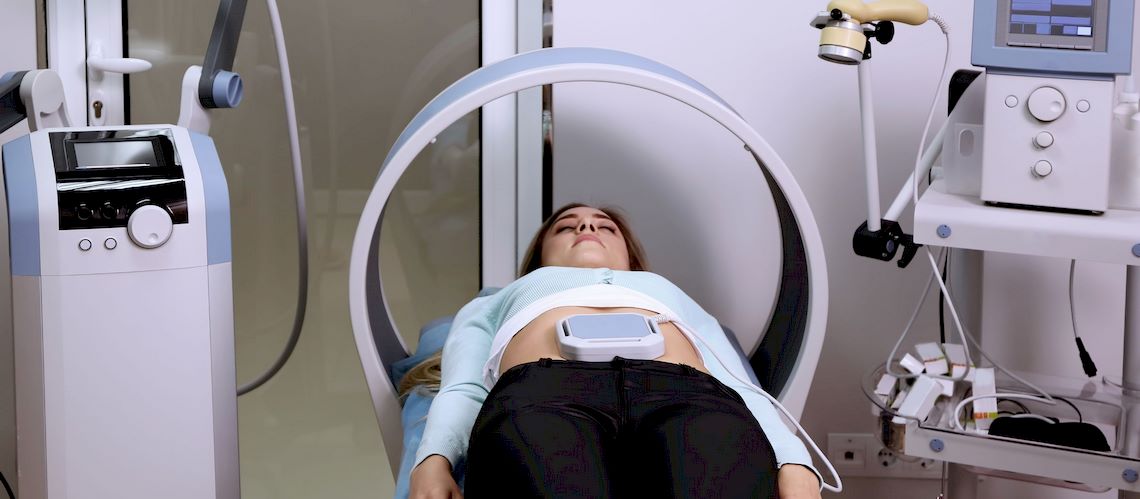The Self Matrix framework emphasizes self-mastery across physical, cognitive, and spiritual dimensions, recognizing the foundational role of physical vitality in achieving clarity and balance. Pulsed Electromagnetic Field (PEMF) therapy aligns with this framework by offering a scientifically supported, non-invasive modality that enhances cellular health, promotes healing, and supports overall well-being. This article explores PEMF therapy through its mechanisms, benefits, applications, scientific evidence, and real-world examples, showcasing its role in fostering resilience and vitality.
Definition
PEMF therapy uses low-frequency electromagnetic fields to stimulate cellular repair, improve circulation, and enhance the body’s natural healing processes. By interacting with cell membranes, these electromagnetic fields restore optimal cellular electrical potential, facilitating tissue regeneration and reducing inflammation (Bassett, 1989; Rosch & Markov, 2004). This interaction influences ion channels and cellular metabolism, further driving regenerative processes (Chang et al., 2003).
History and Evolution
PEMF therapy has its roots in early 20th-century research, where electromagnetic fields were first used to heal fractures and soft tissues (Bassett, 1989). Advances in technology have since expanded its applications to conditions like arthritis, chronic pain, and post-surgical recovery, supported by robust evidence (Rosch & Markov, 2004; Andrade et al., 2016). Emerging research has also begun exploring its potential in neurological conditions and cognitive recovery, such as improvements in motor function in Parkinson’s disease (Sandyk, 1995) and visuospatial deficits in multiple sclerosis (Sandyk, 1994). These advancements highlight the highly interconnected nature of physical and mental well-being, as emphasized in the Self Matrix framework.
How PEMF Therapy Works
PEMF therapy enhances physical vitality by targeting key physiological processes:
- Cellular Stimulation: Electromagnetic fields restore cell membrane potential, optimizing cellular repair and energy production (Mansourian & Shanei, 2021). Chang et al. (2003) demonstrated that PEMFs influence ion channel activity and signal transduction pathways, further supporting cellular regeneration. This foundational effect supports the physical resilience central to the Self Matrix.
- Improved Microcirculation: Enhanced blood flow delivers oxygen and nutrients more effectively, accelerating tissue repair and recovery (Strauch et al., 2009).
- Pain and Inflammation Modulation: Studies show PEMFs reduce inflammation and alleviate pain by regulating cytokines and promoting cellular repair (Tong et al., 2022; Bagnato et al., 2016).
- Neurological Benefits: PEMFs positively influence motor and cognitive functions, providing emerging benefits for mental clarity and emotional balance (Sandyk, 1994; Sandyk, 1995).
Benefits
The scientific evidence highlights PEMF therapy’s significant impact on physical health, with cascading benefits for mental clarity and emotional balance:
Physical Benefits
- Pain Relief: Tong et al. (2022) and Vavken et al. (2009) confirmed significant reductions in pain and stiffness, particularly in osteoarthritis patients.
- Enhanced Recovery: Faster healing from injuries and surgeries has been demonstrated in studies on knee osteoarthritis and wound healing (Bagnato et al., 2016; Henry et al., 2008).
- Improved Circulation: Enhanced microcirculation supports physical vitality and resilience (Strauch et al., 2009).
Cognitive and Emotional Support
- Mental Clarity: Preliminary research suggests that improved circulation and cellular health may contribute to better focus and stress management. However, further research is needed to confirm these effects (Sandyk, 1995).
- Neurological Modulation: Case studies in Parkinson’s disease and multiple sclerosis reveal cognitive and motor improvements (Sandyk, 1994; Sandyk, 1995).
Applications
PEMF therapy can address a range of health goals and challenges, aligning with the Self Matrix framework’s emphasis on holistic growth:
- Chronic Pain and Inflammation: Effective for managing conditions like arthritis, low back pain, and fibromyalgia (Andrade et al., 2016; Ganesan et al., 2009). Specifically, Foley-Nolan et al. (1990) demonstrated PEMF’s success in reducing neck pain and improving mobility, a significant benefit for individuals with persistent discomfort.
- Post-Exercise Recovery: Athletes use PEMFs to reduce muscle soreness and accelerate recovery, supporting their physical performance (Ghanbari Ghoshchi et al., 2024).
- Post-Surgical Healing: Studies highlight faster recovery times and reduced edema, promoting physical resilience (Henry et al., 2008).
- General Vitality Maintenance: Regular PEMF use enhances overall well-being, particularly in older adults, as it supports energy and circulation (Rosch & Markov, 2004).
Case Studies and Testimonials
Research-backed evidence and clinical observations illustrate the potential benefits of PEMF therapy for various conditions:
1. Chronic Pain Relief in Neck Pain Patients
In a study by Foley-Nolan et al. (1990), 20 patients with persistent neck pain participated in a double-blind, placebo-controlled trial. Those treated with pulsed high-frequency electromagnetic therapy reported statistically significant reductions in pain and improvements in neck mobility compared to the placebo group. This study highlights PEMF therapy’s potential as a non-invasive option for managing chronic musculoskeletal pain.
2. Pain Reduction and Recovery in Knee Osteoarthritis
Bagnato et al. (2016) conducted a randomized, double-blind trial to evaluate the impact of PEMF therapy on patients with knee osteoarthritis. Over the course of treatment, patients experienced significant improvements in pain levels and physical function, as well as enhanced overall recovery compared to those receiving a placebo.
3. Accelerated Healing in Post-Surgical Recovery
Henry et al. (2008) reviewed the role of magnetic fields in tissue repair and wound healing. Their findings demonstrated that PEMF therapy enhances blood flow and reduces inflammation in surgical wounds, resulting in faster healing and fewer complications.
4. Improved Motor Function in Parkinson’s Disease
Sandyk (1995) documented the effects of weak electromagnetic fields in a patient with Parkinson’s disease who exhibited micrographia (small, illegible handwriting). Following treatment, the patient showed marked improvements in handwriting size and clarity, suggesting that PEMF therapy can positively influence motor symptoms.
5. Cognitive Recovery in Multiple Sclerosis
In another study, Sandyk (1994) investigated the use of weak electromagnetic fields in patients with multiple sclerosis who experienced visuospatial attention deficits. Treatment led to measurable improvements in cognitive function, particularly in tasks requiring spatial awareness.
Scientific Evidence
PEMF therapy’s effectiveness is backed by a robust body of evidence:
- Pain Management: Meta-analyses by Tong et al. (2022) and Vavken et al. (2009) confirmed significant improvements in pain and physical function in osteoarthritis patients.
- Inflammation Reduction: Ganesan et al. (2009) and Foley-Nolan et al. (1990) demonstrated reductions in inflammation across various chronic conditions.
- Neurological Benefits: Sandyk’s studies (1994; 1995) show improvements in motor and cognitive function, offering hope for patients with neurological disorders.
- Optimized Protocols: Mansourian and Shanei (2021) emphasized the importance of tailored PEMF settings to maximize therapeutic outcomes.
How to Get Started with PEMF Therapy
Integrating PEMF therapy into your wellness routine is straightforward and can enhance the physical dimension of your Self Matrix:
- Choose the Right Device: Select a PEMF device suited to your health goals, focusing on low-frequency models for general use (Mansourian & Shanei, 2021).
- Establish a Routine: Start with daily sessions of 15–30 minutes, adjusting frequency based on response and goals (Foley-Nolan et al., 1990).
- Prioritize Safety: Consult a professional, especially if you have medical implants or chronic conditions (Markov, 2007).
- Track Progress: Regularly evaluate improvements in physical health, cognitive clarity, and emotional balance (Rosch & Markov, 2004).
Conclusion
PEMF therapy represents a scientifically validated, versatile tool for enhancing physical vitality. By addressing pain, inflammation, and recovery, PEMF therapy empowers individuals to achieve greater resilience and balance in their lives. Its cascading effects on mental clarity and emotional health further support holistic growth.
Consider incorporating PEMF therapy into your wellness routine to experience its scientifically validated benefits. Consult with a healthcare professional to determine the best device and protocol for your needs, and align your health practices with the principles of the Self Matrix to unlock your full potential.
References:
Andrade, R. et al. (2016) ‘Pulsed electromagnetic field therapy effectiveness in low back pain: A systematic review of randomized controlled trials’, Porto Biomedical Journal, 1(5), pp. 156–163.
Bagnato, G.L. et al. (2016) ‘Pulsed electromagnetic fields in knee osteoarthritis: a double-blind, placebo-controlled, randomized clinical trial’, Rheumatology (Oxford, England), 55(4), pp. 755–762.
Barnes, F.S. and Greenebaum, B. (eds.) (2007) Mechanisms and Therapeutic Applications of Time-Varying and Static Magnetic Fields. 3rd edn. CRC Press.
Bassett, C.A. (1989) ‘Fundamental and practical aspects of therapeutic uses of pulsed electromagnetic fields (PEMFs)’, Critical Reviews in Biomedical Engineering, 17(5), pp. 451–529.
Chang, W.H. et al. (2003) ‘Therapeutic Effects of Electromagnetic Fields’, in P. Stavroulakis (ed.) Biological Effects of Electromagnetic Fields: Mechanisms, Modeling, Biological Effects, Therapeutic Effects, International Standards, Exposure Criteria. Berlin, Heidelberg: Springer, pp. 624–732.
Foley-Nolan, D. et al. (1990) ‘Pulsed high frequency (27 MHz) electromagnetic therapy for persistent neck pain: A double-blind, placebo-controlled study of 20 patients’, Orthopedics, 13(4), pp. 445–451.
Ganesan, K. et al. (2009) ‘Low-frequency pulsed electromagnetic field: A viable alternative therapy for arthritis’, Indian Journal of Experimental Biology, 47(12), pp. 939–948.
Ghanbari Ghoshchi, S. et al. (2024) ‘Pulsed Electromagnetic Field (PEMF) stimulation as an adjunct to exercise: A brief review’, Frontiers in Sports and Active Living, 6.
Henry, S.L. et al. (2008) ‘The Effect of Magnetic Fields on Wound Healing’, Eplasty, 8, e40.
Mansourian, M. and Shanei, A. (2021) ‘Evaluation of Pulsed Electromagnetic Field Effects: A Systematic Review and Meta-Analysis on Highlights of Two Decades of Research’, BioMed Research International, 2021, pp. 1–22.
Markov, M.S. (2007) ‘Expanding use of pulsed electromagnetic field therapies’, Electromagnetic Biology and Medicine, 26(3), pp. 257–274.
Rosch, P.J. and Markov, M.S. (eds.) (2004) Bioelectromagnetic Medicine. Boca Raton: CRC Press.
Sandyk, R. (1995) ‘Parkinsonian micrographia reversed by treatment with weak electromagnetic fields’, International Journal of Neuroscience, 81(3–4), pp. 83–93.
Sandyk, R. (1994) ‘Reversal of visuospatial hemi-inattention in patients with chronic progressive multiple sclerosis by treatment with weak electromagnetic fields’, International Journal of Neuroscience, 79(3–4), pp. 169–184.
Strauch, B. et al. (2009) ‘Evidence-based use of pulsed electromagnetic field therapy in clinical plastic surgery’, Aesthetic Surgery Journal, 29(2), pp. 135–143.
Tong, J. et al. (2022) ‘The Efficacy of Pulsed Electromagnetic Fields on Pain, Stiffness, and Physical Function in Osteoarthritis: A Systematic Review and Meta-Analysis’, Pain Research & Management, 2022, Article ID 9939891.
Vavken, P. et al. (2009) ‘Effectiveness of pulsed electromagnetic field therapy in the management of osteoarthritis of the knee: A meta-analysis of randomized controlled trials’, Journal of Rehabilitation Medicine, 41(6), pp. 406–411.




